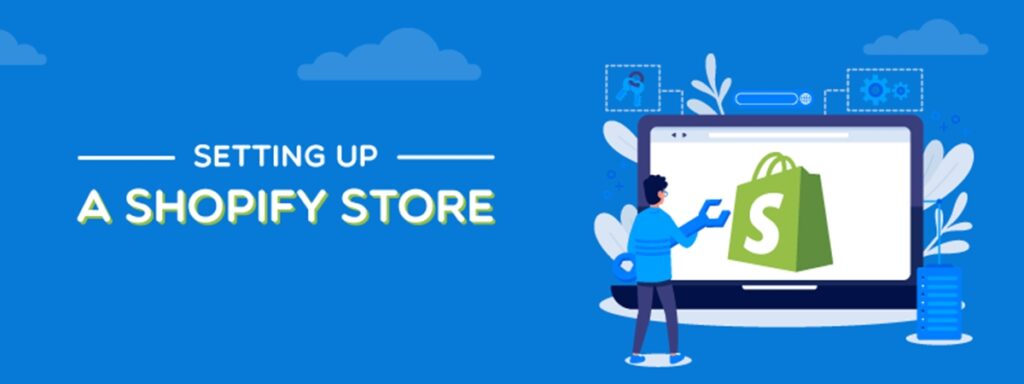A Complete Guide to Building and Managing Your Shopify Site

Black Air
October 7, 2024
Introduction to Shopify
A. What is Shopify?
Shopify is a popular e-commerce platform that allows individuals and businesses to create their own online stores. It provides a user-friendly interface and a variety of tools to help you sell products online.
- Overview of the platform: Shopify is designed to cater to both beginners and experienced entrepreneurs. It offers a range of customizable templates and features that make setting up an online store straightforward.
- Key features and functionalities: Some of the standout features include payment processing, inventory management, and a built-in blogging platform. Shopify also supports various sales channels, including social media and marketplaces.
- Target audience and use cases: Shopify is ideal for small to medium-sized businesses, but it can also scale to accommodate larger enterprises. Whether you’re selling handmade crafts, clothing, or digital products, Shopify can support your needs.
B. Benefits of Using Shopify
Using Shopify comes with several advantages that can help streamline your e-commerce journey.
- User-friendly interface: The platform is designed to be intuitive, making it easy for anyone to navigate, even without technical skills.
- Scalability for businesses of all sizes: As your business grows, Shopify can grow with you. You can start with a basic plan and upgrade as your needs change.
- Comprehensive support and resources: Shopify offers extensive documentation, tutorials, and customer support to help you troubleshoot any issues.
C. Understanding E-commerce Basics
Before diving into Shopify, it’s essential to grasp the fundamentals of e-commerce.
- Definition of e-commerce: E-commerce refers to buying and selling goods or services over the internet. It encompasses a wide range of activities, from retail to wholesale.
- Types of e-commerce models: Common models include Business-to-Consumer (B2C), Business-to-Business (B2B), and Consumer-to-Consumer (C2C).
- Importance of an online presence: In today’s digital age, having an online presence is crucial for reaching a broader audience and increasing sales.

Setting Up Your Shopify Site
A. Creating Your Shopify Account
Getting started with Shopify is a simple process.
- Step-by-step account creation: Visit the Shopify website, click on “Start free trial,” and follow the prompts to create your account.
- Choosing the right plan: Shopify offers several pricing plans. Consider your budget and the features you need before making a decision.
- Understanding trial periods: Shopify typically offers a 14-day free trial, allowing you to explore the platform without any commitment.
B. Selecting a Domain Name
Your domain name is your online identity, so choose wisely.
- Importance of a good domain name: A memorable domain name can enhance your brand’s credibility and make it easier for customers to find you.
- Tips for choosing a domain: Keep it short, simple, and relevant to your business. Avoid using numbers or hyphens, as they can confuse potential customers.
- Registering your domain with Shopify: You can purchase a domain directly through Shopify or connect an existing one.
C. Customizing Your Store Design
A well-designed store can attract and retain customers.
- Choosing a theme: Shopify offers a variety of free and paid themes. Select one that aligns with your brand and is responsive on mobile devices.
- Customizing your theme settings: Use the theme editor to adjust colors, fonts, and layouts to match your brand’s aesthetic.
- Adding branding elements: Incorporate your logo, brand colors, and other visual elements to create a cohesive look.

Adding Products to Your Shopify Site
A. Product Listing Essentials
Listing your products effectively is key to driving sales.
- Types of products you can sell: Shopify supports physical goods, digital products, and services. Choose what fits your business model.
- Writing effective product descriptions: Use clear, concise language that highlights the benefits and features of your products. Include keywords to improve SEO.
- Importance of high-quality images: Invest in professional photography or high-resolution images to showcase your products. Good visuals can significantly impact purchasing decisions.
B. Organizing Your Products
Proper organization helps customers find what they need quickly.
- Creating collections and categories: Group similar products together to make navigation easier. For example, create categories for different types of clothing or accessories.
- Using tags for better navigation: Tags can help customers filter products based on specific attributes, such as size or color.
- Managing inventory effectively: Keep track of stock levels to avoid overselling and ensure timely restocking.
C. Setting Up Pricing and Variants
Pricing strategies can influence customer behavior.
- Pricing strategies for your products: Consider factors like cost, competition, and perceived value when setting prices. Experiment with different pricing models, such as bundling or tiered pricing.
- Managing product variants (size, color, etc.): Shopify allows you to create variants for products, making it easy to offer different options without creating separate listings.
- Offering discounts and promotions: Use discounts strategically to attract customers and boost sales, especially during holidays or special events.

Managing Your Shopify Store
A. Order Management
Efficient order management is crucial for customer satisfaction.
- Processing orders efficiently: Use Shopify’s order management tools to track and fulfill orders promptly.
- Handling returns and refunds: Establish a clear return policy and use Shopify’s features to manage returns smoothly.
- Tracking shipments and deliveries: Keep customers informed about their order status with tracking information.
B. Customer Relationship Management
Building strong relationships with customers can lead to repeat business.
- Building a customer database: Use Shopify’s customer management tools to collect and organize customer information.
- Engaging with customers through email marketing: Send personalized emails to keep customers informed about new products, promotions, and updates.
- Utilizing customer feedback for improvement: Encourage reviews and feedback to understand customer preferences and improve your offerings.
C. Analyzing Store Performance
Regular analysis can help you make informed decisions.
- Understanding Shopify analytics: Use Shopify’s built-in analytics to track sales, traffic, and customer behavior.
- Key performance indicators to track: Monitor metrics like conversion rate, average order value, and customer acquisition cost to gauge your store’s performance.
- Making data-driven decisions: Use insights from your analytics to refine your marketing strategies and product offerings.

Marketing Your Shopify Site
A. Search Engine Optimization (SEO)
SEO is essential for driving organic traffic to your store.
- Basics of SEO for e-commerce: Focus on optimizing your site structure, product pages, and content for search engines.
- Optimizing product pages for search engines: Use relevant keywords in product titles, descriptions, and meta tags to improve visibility.
- Importance of backlinks and content marketing: Create valuable content and seek backlinks from reputable sites to enhance your site’s authority.
B. Social Media Marketing
Social media can be a powerful tool for reaching potential customers.
- Choosing the right platforms: Identify where your target audience spends their time and focus your efforts there, whether it’s Instagram, Facebook, or Pinterest.
- Creating engaging content: Share high-quality images, videos, and stories that resonate with your audience and showcase your products.
- Running paid advertising campaigns: Consider using paid ads to reach a broader audience and drive traffic to your store.
C. Email Marketing Strategies
Email marketing remains one of the most effective ways to engage customers.
- Building an email list: Use sign-up forms on your website and offer incentives, like discounts, to encourage subscriptions.
- Crafting effective email campaigns: Personalize your emails and segment your audience to send targeted messages that drive engagement.
- Analyzing email marketing performance: Track open rates, click-through rates, and conversions to refine your email marketing strategy.

Conclusion


FAQs
How much does it cost to use Shopify?
Yes, Shopify provides tools and resources to help you migrate your existing store seamlessly.
Shopify supports a wide range of payment methods, including credit cards, PayPal, and other popular payment gateways.
Absolutely! Shopify is designed to cater to businesses of all sizes, making it an excellent choice for small businesses.
It stands out for its high SPF and PA ratings, lightweight texture, and additional skincare benefits like hydration and antioxidants.
Absolutely! It layers beautifully and provides a great base for makeup.
Reapply every two hours, or sooner if you’re swimming or sweating.
Yes, it’s dermatologically tested and formulated to be gentle on various skin types.
Apply it as soon as you remember, and maintain regular application for effective protection.


